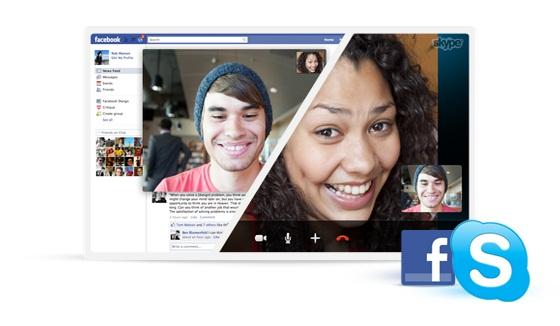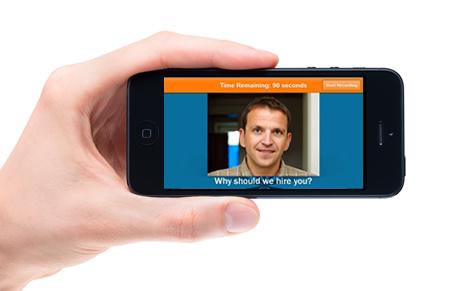
The video interview is coming. Whether it's because of tight travel budgets, or that you will telecommute, or even use video for your on-the-job meetings, video is increasing in use as bandwidth issues become a thing of the past. Throw in something like
Apple's Facetime for making everyday calls to your friends and how far behind will video interviews be in the marketplace? But a video interview is a very different experience than a traditional face-to-face interview. Sure, you can see the faces, but the experience is still not the same as face-to-face. Here are five tips to help you navigate the video interview.
1. The camera is your best friend
I attended a professional seminar on what needs to happen when "on camera." The very first and last point made by the speaker was that you need to treat the camera as your best friend. Well, actually he said the camera needed to be like your lover, but his point was that you must look at the camera. All. The. Time. Looking away from the camera means the people on the other end wonder what you are looking at. For visual people such as myself, looking up and away is our way of collecting our thoughts. In a video interview, looking up and away loses the contact you have with the people at the other end of the interview.
2. Your camera must be at eye-level for the interview
Most of us have a camera at the top of our monitor or laptop (most Macs and many PCs). Others will have a standalone camera on the side of the monitor or on the desk. For casual conversations, no problem. But for interviews, the camera position changes your look to the people on the other end. If the camera is too low, you look like you are looking down at them. If the camera is too high, you end up looking up to your audience. In both cases, your face is distorted compared to looking straight ahead into the camera. Make the camera level with your eyes whether it takes books to move the camera or to help move you into the right position.
3. Don't get too close to the camera
The objective is to present yourself as at least shoulders and up. Not just your head. Some of my earliest videos done on my site show me as nothing less than
Max Headroom. Not what you want in an interview.
4. Movement matters
The camera blows your movements way out of proportion compared to a regular face-to-face interview. Move your head an inch on a computer camera and it looks like you'll run out of the picture. If your hands are not in the picture and you put them there to make a point, your hands "pop" into the screen like some weirded out horror movie. Instead, you want to be centered, calm, and with your eyes focused on the camera lens. Responding to questions, you want to make minimal movements. It doesn't
feel natural, but it
looks natural.
5. Backgrounds matter
You know why
Cat always has a white background?
No distractions. (Plus, in her case, you can add in graphics, but that's a different story). What you don't want in your picture is anything that the people interviewing you will look at and wonder about—instead of listening and looking at you. "I wonder where why he painted that wall red?" "What is that weird picture in the background?" "Are those dirty socks on the chair behind him?" Not good. Nope. Not good at all. Of course, as in all things, practice counts. Start taking that Facetime app and use it to practice. Or get on
Skype and video with your friends. Practice with these tips and you'll be way ahead of your competition and even take on those who may have had a face-to-face interview. Video interviews are coming. Time to add it to your interview toolbox to help you get the job.
 The video interview is coming. Whether it's because of tight travel budgets, or that you will telecommute, or even use video for your on-the-job meetings, video is increasing in use as bandwidth issues become a thing of the past. Throw in something like Apple's Facetime for making everyday calls to your friends and how far behind will video interviews be in the marketplace? But a video interview is a very different experience than a traditional face-to-face interview. Sure, you can see the faces, but the experience is still not the same as face-to-face. Here are five tips to help you navigate the video interview.
The video interview is coming. Whether it's because of tight travel budgets, or that you will telecommute, or even use video for your on-the-job meetings, video is increasing in use as bandwidth issues become a thing of the past. Throw in something like Apple's Facetime for making everyday calls to your friends and how far behind will video interviews be in the marketplace? But a video interview is a very different experience than a traditional face-to-face interview. Sure, you can see the faces, but the experience is still not the same as face-to-face. Here are five tips to help you navigate the video interview.
 The video interview is coming. Whether it's because of tight travel budgets, or that you will telecommute, or even use video for your on-the-job meetings, video is increasing in use as bandwidth issues become a thing of the past. Throw in something like Apple's Facetime for making everyday calls to your friends and how far behind will video interviews be in the marketplace? But a video interview is a very different experience than a traditional face-to-face interview. Sure, you can see the faces, but the experience is still not the same as face-to-face. Here are five tips to help you navigate the video interview.
The video interview is coming. Whether it's because of tight travel budgets, or that you will telecommute, or even use video for your on-the-job meetings, video is increasing in use as bandwidth issues become a thing of the past. Throw in something like Apple's Facetime for making everyday calls to your friends and how far behind will video interviews be in the marketplace? But a video interview is a very different experience than a traditional face-to-face interview. Sure, you can see the faces, but the experience is still not the same as face-to-face. Here are five tips to help you navigate the video interview.



